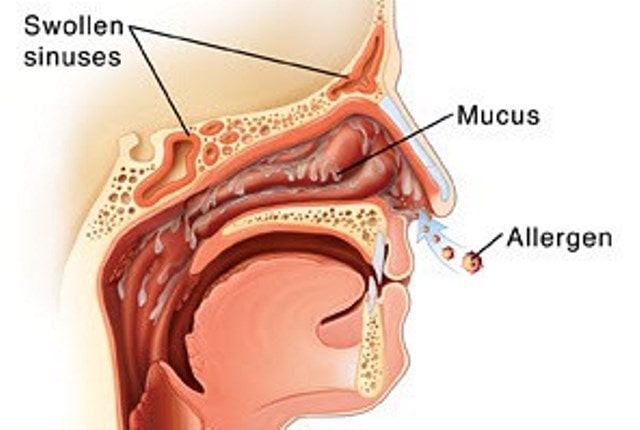You have probably seen your favorite Rock artiste with a nose bridge piercing and wondered how it is done. Maybe you have considered having one but your nasal bridge doesn’t seem to have enough flesh for it to hold on to. Well, read on to find out more about these piercings and nose job options for people who have no nose bridge or would want theirs modified.

Nose Bridge Piercing
A nose bridge piercing is a horizontal bar through the skin on the bridge of the nose (the area between the eyes). It is sometimes referred to as “Erl” or “Earl” piercing, terms derived from the name of the first person to have this type of piercing, Erl van Aken. This piercing falls under the category of surface piercing since most people have little flesh in this area for the piercing to hold on to. As a result, it involves high risk of rejection and migration.
A straight barbell, curved, or staple barbell can be used for nose bridge piercing. A small curved barbell is however the best, but if it is not a flush fit, it can have a crooked look. The downside to a straight barbell is that it often causes too much tension on the edges of the fistula, thereby increasing the probability of migration of the jewelry. Some people believe that piercing on the bridge of your nose will make the wearer cross-eyed, but this is not the case. Involuntary eye-crossing has not been reported in any person with such a piercing.

As a matter of fact, the majority of them report forgetting that the jewelry is even there. You will only notice the jewelry from the corners of your eyes if the barbell is too long. If correct length of the barbell is used, it will hardly detract the attention of your eyes more than the nose itself.
Some people also argue that it might make it difficult to wear your glasses but this is not normally the case if the piercing is done the right way. You just need to ensure that the piercing is done high enough to leave room for the glasses (or sunglasses for that matter).
The piercer will determine the gauge of piercing depending on the amount of tissue you have in the nose bridge area. The risk of rejection decreases as the gauge of piercing increases, so the piercer will ideally try to maximize it as much as possible while ensuring your safety. The healing process takes between 8 and 12 weeks. During this period, it is advisable to prevent exposure of the area to hair care and skin care products as well as harsh cleansers.
No Nose Bridge and what can You Do?
If you have no nose bridge, you might find it challenging to have a it done. After all, the jewelry need some flesh to hold on to. If the flesh in the bridge of your nose is very thin, you may also be more vulnerable to rejection and migration. So does this mean that you cannot have a a pricing on the bridge of your nose?
Well, you can go ahead and have it done and should any signs of rejection and migration be observed, you should consider removing the jewelry before it leads to permanent scarring. Another option for people with no nasal bridge is to have a rhinoplasty (nose job) surgery performed to modify their nasal bridge. you can talk to a plastic surgeon to learn what options are available for your specific case.
High Nose Bridge

The term High Nose Bridge is used to describe a situation whereby the nasal cartilage and bones are located very high up on your face. The nose of such a person typically appears excessively prominent, often making the eyes to look so close together.
This condition or situation can be reduced and refined through a rhinoplasty (nose job) surgery whereby the nasal bones are lowered by cutting or filling them. The cartilage is also rasped down as well as supported to give the nose a lower profile. Depending on your desired shape of the nose, the tip of the nose may also be narrowed. A closed rhinoplasty procedure is mostly used whereby any incision is made on the inside of the nose such that no scars are visible from the outside.
Sore Nose Bridge and Pain in Nose Bridge
What causes sore nose bridge? Well, pain in the bridge of your nose can be a symptom of sinusitis. This refers to an inflammation of nasal sinuses (small holes the skull that are located between facial bones) due to bacterial or viral infection or allergic reactions to agents such as cigarette smoke, dust, formaldehyde, pollen and pet dander among others.
The sinuses can also get inflamed due to excessive dryness in the house or office, especially when dry-air heating equipment is used. There are various types of sinusitis depending on which sinuses are affected. The most common one is maxillary sinusitis which causes cheek or dental pain as one of the symptoms. Frontal sinusitis is manifested by forehead pain. Ethmoid sinusitis or Ethmoiditis if you like, is the type that causes pain at the nasal bridge but in some cases, the pain could be felt behind the eyes.
Other symptoms of a nose bridge that is roe or painful include fever, raspy voice, nasal obstruction and loss of sense of smell. Sore throat, coughing, fatigue, and puffiness in the eyes could also be experienced among some patients but these symptoms are rather uncommon.
If you are having pain in your nose bridge, it is advisable to see your doctor. Treatment often involves a prescription for antibiotics such as amoxicillin and erythromycin for a period of around ten days. Stringer antibiotics such as Ceftin, Augmenti and Ceclor may be prescribed for up to four weeks in case of a recurring sinusitis. In addition, the doctor may prescribe or recommend one or a few of the following remedies to get rid of sinusitis (and of course the pain).
- Decongestants: decongestants such as phenylpropanolamine, pseudoephedrine, and phenylpherine help to drain the nose and sinuses.
- Nasal sprays: Nasal sprays such as Dristan and Afrin are decongestants that are used by spraying into the nasal passage. They should however be used for a few days only to prevent addiction.
- Inhalers: Inhalers with Beconase, Vencenase or Nasalcrom among other drugs help to lessen inflammation of the sinuses. They also help in healing the sinus membranes.
- Antihistamines: Antihistamines such as Tavist and Hismanal may be administered to reduce irritation of the nose and relieve nasal and sinus inflammation.
- Expectorants: These have a thinning effect on the mucus which helps it to drain out easily.
- Humidifier: Having a humidifier in your house can help raise the level of humidity which helps to relieve the drying-out effect on the sinus membranes.
Bump on Nose Bridge

I have a bump on my nose bridge and I am wondering what can be done about it. Does that statement ring bells in your head? Well, you are not alone. Getting rid of a bump on the bridge of our nose is a common request amongst patients of rhinoplasty (nose job). Nose bumps vary in size from small bumps that a patient desires to have refined to get a better nose profile to more of a Roman nose type of bump that is typically very prominent, attracting the attention from other facial features.
Some people may have no problem with this, but if you would rather not see the bump on the bridge of your nose, it can be removed through rhinoplasty surgery. In such surgeries, the bump on the nose bridge is removed or reshaped to match your desired look. Take a look at the picture below to get an idea of what can be done to reduce a bump on your nasal bridge:
Nose Bridge Surgery
Nose bridge surgery can be performed to refine the look of the nose or to get rid of unwanted features such as bumps. Depending on the structure of the patient’s nose bridge and the desired outcome, different procedures may be recommended by the plastic surgeon. For example, in case of a bump on the bridge of your nose that needs to be reduced, the surgeon may determine that the bump is mainly comprised of cartilage and there is not so much underlying nasal bones.
In that case, shaving the cartilage down would be enough to reduce the bump. If the surgeon however finds out that the patient has a lot of underlying nasal bones, tiny fractures may be needed to get rid of the nasal bridge bump or reduce the projection of the nose. The needs of patients and the underlying factors that inform the surgeries vary from one patient to another, so it is best to talk to a board certified surgeon for appropriate advice.
Suggested Further Reading
- Nose Piercing – Which Side, Procedure, Celebrities and Pictures
- Nose Piercing Cost or Price – How Much Are Nose Piercings
- Nose Piercing Pain – Does Nose Piercing Hurt
- Nose Piercing Healing Time – How Long It Takes to Heal
- Nose Piercing Scars – Hypertrophic and How to Get Rid of Nose Piercing Scars
- Nose Piercing Bump – On Nose, Inside and How to Get Rid
- Infected Nose Piercing –How to Treat & Clean Nose Piercing Infection
- Nose Piercing Care, Aftercare and Healing
- Pimple in Nose – Causes, Meaning and Getting Rid
- Nose Twitching – Cause, Meaning, Superstition & How to Stop
- Nose Picking & How to Stop Picking Your Nose
- Nose Pain – On Nose Bridge, Inside Broken Nose Pain
- Causes of Redness around Nose and How to Get Rid of Redness Around Nose


